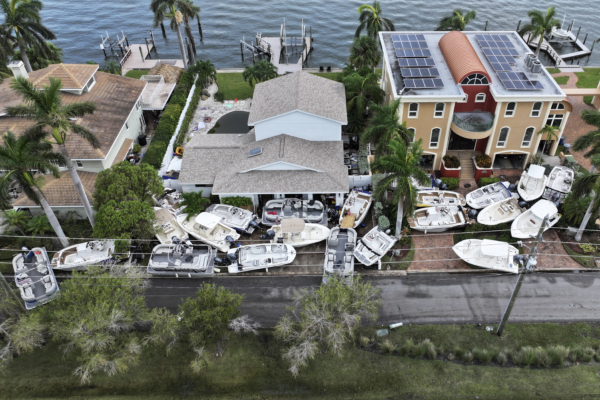On Saturday, September 28th, the administrative authorities in the southeastern United States are facing the daunting task of cleaning up the aftermath of Hurricane “Helene”. “Helene” is one of the most powerful storms the United States has ever encountered, with the number of deaths still rising.
As of Saturday morning, there have been at least 47 reported deaths, and officials are concerned that more bodies may be found in several states.
“Helene” weakened to a post-tropical cyclone on Friday evening but still brought heavy rain to several states, causing widespread flooding and even leading to dam failures, submerging entire towns.
President Biden stated on Saturday, “The destructive power we have witnessed from Hurricane ‘Helene’ is overwhelming. Jill and I continue to pray for all those who have lost loved ones and all those affected by this storm.”
“My team is continuing to update me on the situation, and they are coordinating with state and local officials on recovery efforts,” he said.
Before moving through Georgia into Tennessee and the Carolinas, “Helene” intensified to a Category 4 hurricane on Thursday night, hitting the Florida “Big Bend” region with wind speeds reaching 140 miles per hour (225 kilometers per hour). Wherever it passed, boats capsized, trees fell, cars and streets were flooded, creating chaos everywhere.
In Pinellas County near Tampa, Florida, Sheriff Bob Gualtieri said he had never seen such severe destruction caused by a storm like “Helene”.
“After several hours of on-site assessment, it’s like a war zone,” Gualtieri said at a press conference.
At least 3.25 million customers from five states woke up on Saturday morning to find they had lost power. Authorities warned that it could take several days for services to be fully restored. South Carolina was the hardest hit by power outages, with over a million households and businesses without electricity, while Georgia had 777,000 outages.
As of 11:00 AM on Saturday in the Eastern time zone, the remnants of the storm were wreaking havoc about 145 miles (235 kilometers) southwest of Louisville, Kentucky.
Western North Carolina experienced the heaviest rainfall. According to the National Weather Service’s Weather Prediction Center, Mitchell Mountain in Yancey County received nearly 30 inches (76 centimeters) of rain.
Atlanta received 13 inches of rain, and in southern Georgia, farmers are assessing the damage to the state’s $1 billion cotton crop. This is happening during the cotton harvest season.
In Tennessee, the city center of Newport received evacuation orders because the nearby Walters Dam is at risk of breaching. The National Weather Service issued flash flood warnings overnight for 100,000 residents in eastern parts of Tennessee, urging them to move to higher ground.
On Friday, Biden included Tennessee in a long list of states under a state of emergency declaration, making federal funding and other assistance available for post-disaster recovery in the state.
In western North Carolina, emergency officials in Rutherford County warned residents near Lake Lure Dam that the dam could breach.
(Reference from Reuters reporting)

